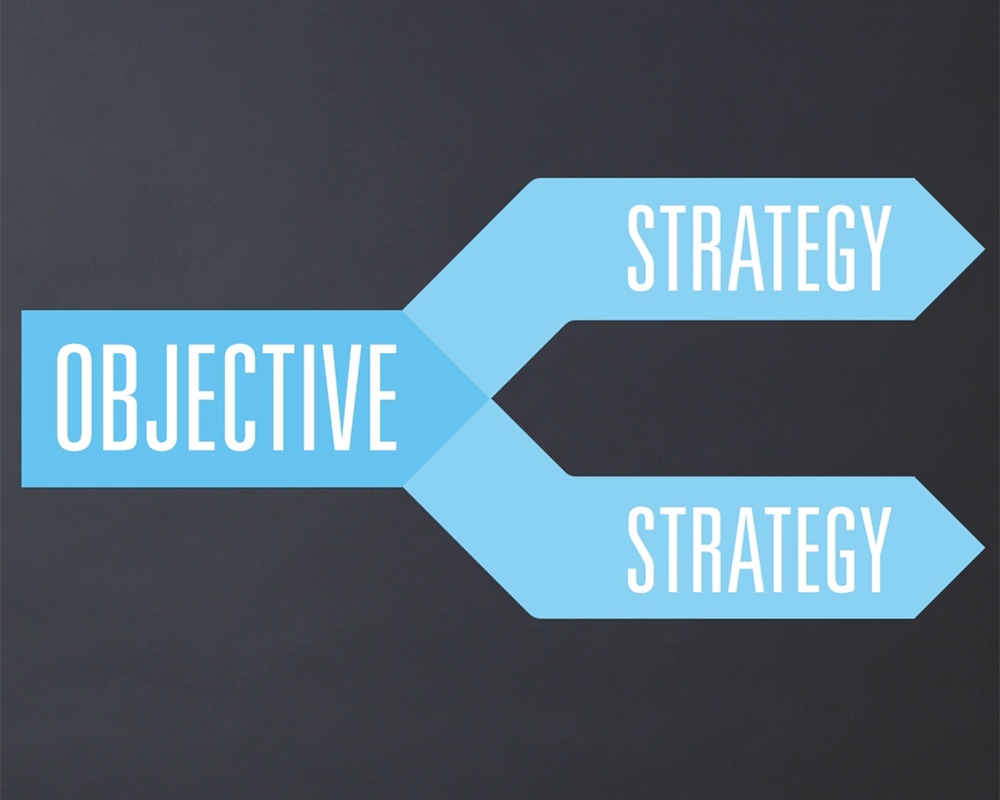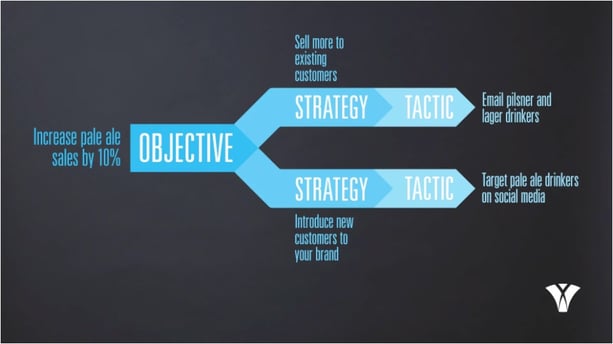
Planning: The Difference Between Objectives, Strategies and Tactics

As we’ve talked about many times on the VI blog (here and here), a strategic marketing plan is the most crucial component of your marketing efforts. Without it, you can’t measure effectiveness, you can’t see the big picture and you certainly can’t create buy-in from your employees – or customers, for that matter.
One of my favorite public relations professors at Oklahoma State University (go Pokes!) always said, “Failure to plan is planning to fail.” That phrase has stuck with me throughout my marketing career, popping into my head when I occasionally start reacting to a situation instead of developing a plan to reach the desired outcome.
So, what happens when you know you need a plan, and know the components of a plan, but aren’t sure how to put them to use?
As a refresher, VI’s 4-step planning process is linear. It includes the following components:
1. Situation Analysis
2. Objectives
3. Strategies
4. Tactics
A situation analysis is the who, what, when and where. It’s the strengths, weaknesses, opportunities and threats.
For the purposes of this blog, we’re going to focus on the latter three components – and the differences between them.
Objectives
A marketing objective must answer the question: what do we want to accomplish? Objectives should always be measurable, enabling us to determine whether or not our marketing efforts are successful.
Example:
An insurance company’s objective could be to “increase annual premiums by 10 percent.”
Strategies
Marketing strategies are often the hardest to comprehend. To put it simply, this step states what you’re going to do to reach your objective – the plan, per se.
Example:
A strategy for increasing premiums could be to “create opportunities that help prospects further their education and see XYZ Company as a trusted resource.”
Tactics
Marketing tactics are the action steps – the how. They support the strategy, which in turn helps us achieve our objective.
Example:
For the insurance company, an effective tactic could be to “host risk management events, such as an educational conference.”

Objectives, strategies and tactics are dependent on each other and must work in tandem. But don’t just stop at developing them. Almost as important as having a strategic marketing plan is spending time with your staff to educate them on the purpose of the plan and each of its components.








